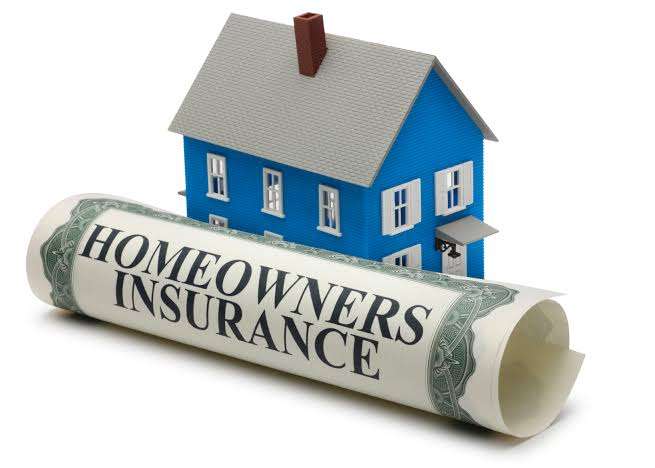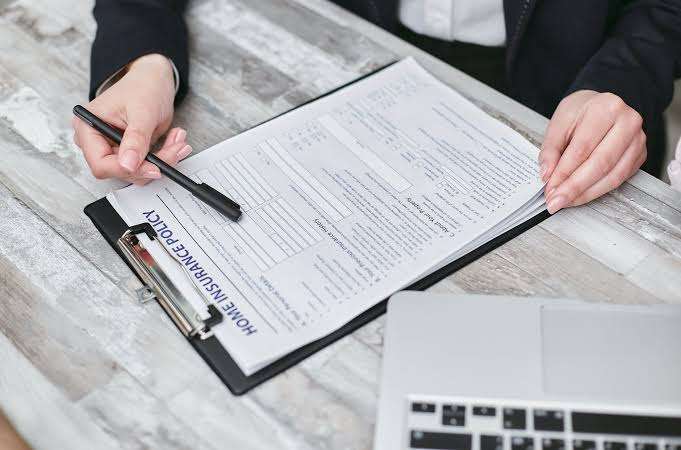Here’s what you should look out for when you’re buying home insurance, either for your new home or for an existing home getting a new policy. Honestly, it’s not enough just to know how much you want to insure your home for. Meaning, the total limit of the policy. Most homeowners get an insurance policy, look at the front page saying, “Oh yeah, I’m covered for X amount of dollars.” They put the policy away and then they never look at it again until they have a problem. And that in itself is a problem because there’s 50 or a hundred pages behind that first page that explain when the insurance coverage actually applies, and more importantly, when it doesn’t apply.
Home Insurance
Meaning, when the insurance company is not going to pay you for damage. And you, as the homeowner, need to come up with that money yourself. But before I get into specifics about what to look out for when getting a new insurance policy, I want to talk about the purpose of insurance.

It’s important to understand how insurance works, what the theory is behind it, why you even get insurance in the first place. Everybody thinks, “Oh, I got a home. “I have property. I need to get insurance.” But why?
Have you ever thought about why you actually need this coverage?
You see, the purpose of insurance, any insurance, car insurance, home insurance, boat insurance, is to spread risk across multiple people. So that one person isn’t stuck with a huge bill that they can’t pay. Let’s talk about the theory of insurance. Let’s say that 10 people own a home, they’re neighbors, all on the same street without insurance.
If one of those neighbors experiences a fire and their home burns down, well, they’re out of luck. Their asset is now reduced to embers. It doesn’t exist anymore, and that person’s completely out of pocket. That’s pretty risky when you consider that most people put a lot of money into their primary residence.
Read More >>> Does Mediation Only Apply To Divorce? Civil Law Explained
So then it becomes extremely risky to own property because one accident could completely ruin your financial situation. In comes insurance. Let’s say those 10 neighbors each put a thousand dollars into a pot just in case something happens to any of their properties.
Well, now it becomes less risky to own that property because you know, at the end of the day, if something happens to your property, there’s a pot that you could potentially pull from to help you repair the damage so that you’re not financially ruined.
In that example, that neighbor that experiences the fire could potentially pull from that pot to repair his damage, and then he’s not out of pocket all that money. This is the basic, basic theory of insurance. Spreading risk across multiple people so that you are not putting that financial burden on yourself when you own property.

So that is the theory behind all insurance, very, very basic theory. You’re spreading risk across multiple people or entities so that you’re not sheltering all of the burden and the risk of owning one asset. Of course, the way that modern insurance companies work is much more advanced than that.
And they have actuaries that are taking into account many factors about when insurance applies and when it doesn’t apply. Because every piece of property has at least some risk tied to it. There’s risk that something happens to that physical piece of property.
And most likely every piece of property will experience some kind of issue in the property’s lifetime and that asset’s lifetime. So you can see how it may not make sense for an insurance entity to cover a property for absolutely anything, because most likely something will happen to that property.
Instead, modern insurance companies only cover certain types of losses, certain types of risks, certain types of accidents happening to property. So back to what I was saying about your insurance policy. Your insurance policy will outline when your insurance covers damage to your home and when it does not cover damage to your home.
For example, under most normal homeowners insurance policies, especially in Florida, hurricane damage would be covered. So if a hurricane comes and damages your roof, causes a leak on the inside. Most of the time that will be covered by your insurance policy.
Again, that’s a risk to an asset that insurance is suppose to cover. If something happens to your property, insurance would cover that. Now, compare and contrast this with wear and tear damage. So, let’s say you have a roof on your property, and it’s a sturdy, well installed tile roof, but you’re getting to that 25, 30-year mark of how long the roof has been on the house.

Well, after 25 or 30 years in the Florida sun, that roof is starting to wear and tear. Like any property over time, things start to break down, right? They start to wear and tear. That’s going to happen to every property across the entire world. So insurance does not cover wear and tear because it’s inevitable.
They know it’s gonna happen. And if they were gonna cover it, they’d have to charge astronomical amounts of money to be able to cover to everybody’s house that we all know is inevitably going to happen. You don’t know that hurricane damage is gonna happen to the house, but you know that eventually your home is gonna wear and tear. Your roof is gonna break down.
Your plumbing is gonna need to be replaced. That all happens. We know it’s going to happen versus the risk of an unknown.
So there are provisions in the insurance policy laying out what they don’t cover based on that theory of risk of things happening and making sure we’re spreading that risk across multiple people so that one person isn’t left financially ruined versus something that is inevitable, wear and tear.
something that’s going to happen eventually that everybody should probably plan for, but that doesn’t really need to be spread across multiple people because there’s no risk of it happening, we know it’s gonna happen.
Does that make sense?
Are you following why certain things are covered and certain things are not covered? That’s the basic theory behind insurance. So, that’s why it’s important to look into your insurance policy and see when are you covered, when are you not covered.
Most normal HO-3 Florida homeowners insurance policies as at the time of this recording will say, “We cover for sudden and accidental damage “to X property,” wherever you’re insuring.

But then, later on in the policy, it’ll say we do not cover these specific things. And those are called exclusions. This is when the insurance company will not cover damage to your home.
Like I was just explaining, wear and tear. If your roof is just old and it starts to leak because it’s breaking down, well, that’s something that’s not covered by our policy.
That is listed as an exclusion in your regular homeowners HO-3 policy. So that’s an example of when the insurance company is not going to cover.
why am I saying all this? Why is this important?
Well, it’s important to understand the purpose of insurance and what is covered or not covered when you’re thinking about buying new insurance.
Because then you can evaluate the new property or your existing property to make sure that you understand what your insurance will actually cover so you can plan in advance.

So a few things you wanna consider when you’re either buying a new home or you’re getting insurance on your current home. The first is the age of the property. So I just spent a bunch of time talking to you about wear and tear.
Well, if your property is several years old, several decades old even, then, you’re probably going to run into more problems about maintenance and wear and tear than a home that was built only a few years ago. So take into account:
When was this property built?
When was the plumbing installed? When was the roof last installed? How old are the appliances? These are things you should consider when getting new insurance. Because, like I’ve been saying, wear and tear is not covered by your insurance policy.
So if you know your roof is 20 plus years old and it’s going to need to be replaced, take that into account when you’re thinking about getting insurance. Take that into account when you’re thinking about buying a new home. Because you needed to have a plan to replace that roof in the next five or 10 years.
The same thing with plumbing
If you have a very old property, it’s likely that your pipes are cast iron, unless they were replaced with a different material more recently. Cast iron does tend to break down after several decades.
so it’s important to know what kind of piping you have so that you can plan for an accident or make sure that you have enough coverage should there be an issue. Very important to note that the pipes themselves are not covered by your insurance policy.

Doesn’t matter what kind of pipes you have. The pipes themselves are not covered. The damage caused by a leaking pipe, sudden and accidental loss, would be covered, but the pipes itself would not.
So again, it’s something to plan for if you know that you’re going to need to replace certain piping in your home. Another big ticket item are appliances.
How old are your appliances? How much longer will they last?
These are important questions to ask. Because, again, the appliance itself is not covered. You cannot get the repair costs or the replacement costs of that appliance covered by insurance, just the damage it causes. So if your washing machine leaks and causes damage to your flooring, flooring is covered, the washing machine is not.
So it’s important to think about these big ticket items: plumbing, appliances, roof. And make sure you have a plan in place to repair or replace these older or bigger items because you know insurance is not gonna cover it. Second thing to consider when you’re getting new insurance, especially if this is a new purchase.
What does the pre-purchase inspection say should be repaired?
I cannot even tell you how many claims I have handled, where somebody buys a house and two or three years later, they’re making a claim for damage to their home.
Well, if we get a copy of that pre-purchase inspection and that report says, “The roof needs to be repaired,” or “The roof needs to be replaced,” or “There is a leak that needs to be taken care of “before the home can be sold.”
But you buy the house anyway and you don’t make the repairs. Well, that’s something that has been existing outside of the policy period. Another exclusion in your policy, is that anything pre-existing the inception of the policy is not covered.

So if you buy a house, you close on September 1st, get your insurance September 1st, but you knew there was an issue with the roof prior to that in July or August when you were doing your inspections. Well, that’s something that’s not covered.
It doesn’t matter if it gets worse over time. That’s also something that’s not covered. Because there’s provisions in your policy that say, “You need to maintain your property properly.”
So, go through that pre-purchase inspection with a fine tooth comb. Look for everything they say needs to be repaired or replaced.
Take care of it before the policy starts, and you’ll be in good shape. The third thing to look out for when getting new insurance and quite possibly the most important thing to look out for when getting new insurance is.
what is your deductible? Can you afford it?
Now, a lot of people get confused about what your deductible actually is. Well, the deductible is the amount of money that you are responsible for paying as the homeowner, as the property owner, that you’re responsible for paying should there be a loss.
You’re not paying it to the insurance company necessarily, but that’s an amount of money that you’re gonna be responsible for before the insurance kicks in. For example, let’s say that you have damage to your roof, needs to be replaced, and the roof is gonna cost $20,000. Let’s say, your deductible is $5,000.
This means that the insurance company is going to write you a check for $15,000 because they take the total amount that you need for repairs. They take out the deductible and say, “Okay, you’re responsible for paying that five grand. “Here’s the remaining amount.
Here’s 15,000.” Well, if you can’t find a roofer to do your roof for $15,000, but you don’t have $5,000 to cover that deductible, you’re not in a good spot.
It’s important to know what is this deductible?
Do I have enough money in my savings account, in my bank account to cover this amount? I cannot tell you how many times I have somebody come to me with a five, seven, $10,000 deductible or more that they can’t cover. They don’t have that money lying around.
Well, it becomes very difficult then to do the repairs because your insurance company is only going to pay in excess of what that deductible amount is. And most homeowners insurance policies in Florida have separate deductibles for separate reasons.

If you have a normal age of three, you’re going to have a hurricane deductible and you’re going to have an other perils deductible.
So, if it’s a hurricane loss, hurricane caused damage to your home, they apply the hurricane deductible, which is often much higher than the regular deductible if it’s a non-hurricane loss, say, there was a pipe leak or something separate, it’s gonna be a bit less. But make sure to know what those deductibles are.
Can you cover them? Are you able to afford them?
Often, cheaper policies, cheaper meaning a smaller monthly payment, have higher deductibles for that reason. Insurance company charges you less because they know at the end of the day, it’s going to take a bigger loss to cause them to pay you back some of that money.
And the likelihood of a bigger loss is, obviously, less than something that’s smaller and less costly. So when you’re looking at policies and you say, “Oh, wow! This one is only $250 a month, “
but this one over here is 500.” Well, there might be a big difference in what the deductibles are. If one has a $2,000 deductible and the other one’s an $8,000 deductible, you want to think about, “Well.
What risk am I taking here?
“Do I have $8,000 in my bank account “and I’m fine using it should something happen.” Again, this comes back down to risk. What is the risk that something large happens, where you’re going to need to exceed that deductible amount?
What is the risk that something big happens to your home and you need to use the insurance? This is all a game of risks, spreading risk out.
What is your risk profile? Are you risk adverse?
Are you willing to take a little bit more risk? Think about that when you are choosing a policy. Think about what the deductible is, what you’re willing to risk when it comes to paying that large deductible or when it comes to paying a smaller monthly payment, but potentially a larger deductible; versus paying a larger monthly payment, but a very small deductible.

While we’re talking about cheaper policies, I’ll get into the fourth thing you definitely need to look at when you are choosing new insurance. And that is limits, policy limitations and exclusions. And I don’t mean the limits that’s listed on the first page of the policy that says, “We’ll cover up to $500,000 or $200,000.” No. I’m talking about the rest of the policy.
The other 50 or a hundred pages that’s in your policy that explains when you’re covered and when you’re not covered. You see, cheaper insurance policies, meaning, smaller monthly payment, often come with greater limitations than other insurance policy that may be a bit more expensive. Let me give you an example: water damage limits.
What is a water damage limit?
It’s an endorsement, meaning, a separate page that’s the attached to the policy and applies in certain circumstances that limits the amount of money the insurance company will actually pay out for a loss. No matter what the actual number is on that first page of the insurance policy that says, “We will cover X amount of dollars in insurance.”
These water damage limits say, “We only cover up to X amount of money for any water damage “that happens with the property.” In Florida, the typical water damage limit endorsement is for $10,000. Take a minute to think about that, $10,000. This limit means that if you have a water damage claim, let’s say a bathroom pipe leaks, and damages your floors, damages your cabinets.
You need to do a whole demolition. Maybe you need to do mold remediation. Maybe you need to do water mitigation. There’s a lot involved. You need to replace the floors, replace drywall, baseboards, maybe an entire new vanity. This will start to add up. But you opted for a cheaper policy that said, “Hey, insurance was only gonna pay out $10,000 “no matter what happened.”

Well, if your entire loss is gonna cost you $20,000, this is obviously not including your mold and your water mitigation, but if the entire demo and rebuild your bathroom is gonna be $20,000, well, you’re kind of out of luck because you have this water damage limit that says they’re only ever gonna pay $10,000 no matter what the damage is.
And again, this doesn’t have anything to do with the amount of insurance you have, that number on the first page. All they pay out is $10,000, point blank. That’s all.
You can see why it’s important to know what kind of limits and exclusions and endorsements you have in the policy before you just accept the cheapest option because you could run into a really big issue.
And I have many people that come to me every day, every week, every year, and say, “Oh, I don’t have enough money to do these repairs “because my insurance company is only paying out X amount.” And I take a look at their policy and that’s all they’re entitled to. Even though they’re paying their insurance every single month for years and years, they don’t realize what they have.
So very important to know what kind of exclusions, what kind of endorsements, what kind of limitations your insurance policy has. What insurance policy you’re choosing has attached to that first page that nobody seems to look past. To recap, if you’re getting new home insurance, whether for a new home or for an existing home with a new policy, there are four things you need to consider before you get that policy.

The first is the age of the property and big ticket items like the roof, appliances, and plumbing. Make sure you know when and if those things need to be repaired or replaced in the future, because age-related damage is not covered. Wear and tear, not covered.
The pre-purchase inspection
If you’re buying a new home, make sure you look at that pre-purchase inspection report. Figure out what needs to be repaired and replaced before you get the home. Because again, anything that pre-dates the inception of the policy is also not covered by insurance.
Three, before you get new insurance, you need to consider the deductible. That is probably one of the most important things to consider when getting new insurance. Can you afford the deductible? Is that something you’re willing to part with?
What is your risk profile?
Are you willing to pay a smaller monthly amount to have a higher deductible or would you rather pay more in your monthly insurance cost to have a smaller deductible should something happen to your property? Fourth, this is something that nobody thinks about when they’re getting new insurance.

People just look at the price and the amount of coverage. But remember, there’s 50 or a hundred plus pages behind that first page explaining when insurance is applicable and when it’s not. And often there are endorsements or attachments to the policy explaining what limitations apply.
Like the water damage limit, which will say, “We will only pay out X amount of dollars. “for this type of loss,” or “We will not pay more than X.” And this has nothing to do with the amount of insurance you get. It’s very, very important to understand what exclusions and what limitations are part of the policy.
Read More >>> Tech Gadgets Updates and Gaming Updates
The more you understand about insurance, the better you can plan for your future and not get stuck in a situation where you’re out of pocket or don’t have enough to cover your costs for your home. So make sure that you take these things into consideration before you get your next homeowners insurance policy.
